As we left Lithuania and crossed the border into Latvia, well-kept roads gave-way to single-lanes under construction and slow moving traffic.
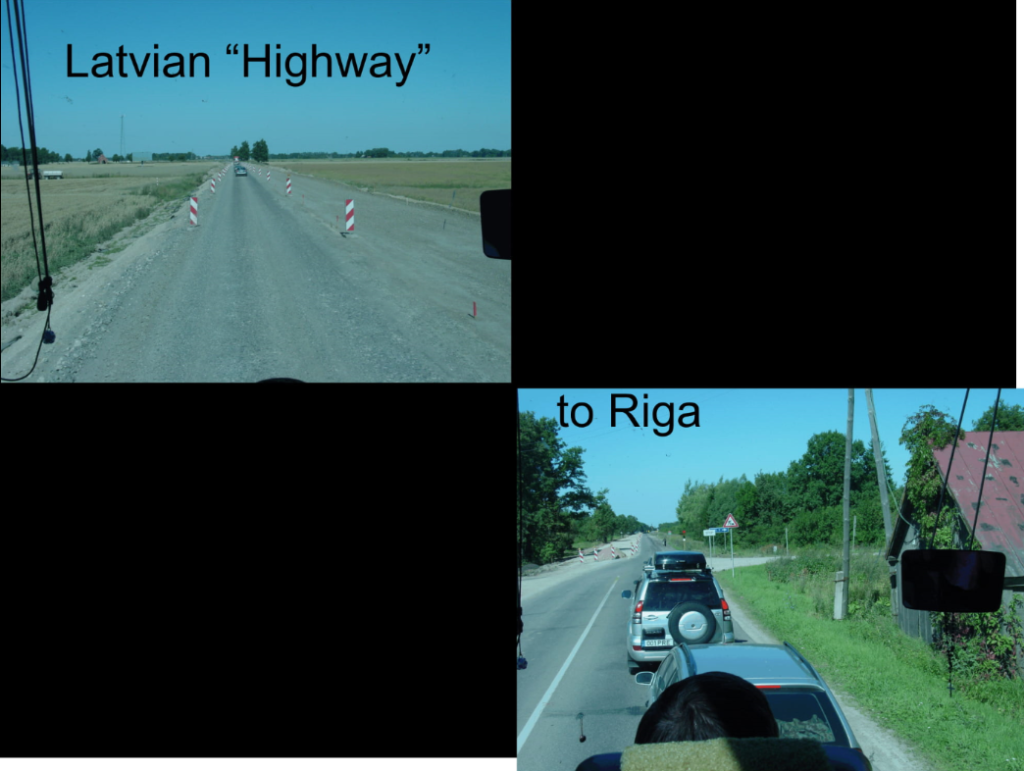
After we stopped at customs, we headed north having no idea what to expect in what seemed like a country still on the rebound from years of neglect. That is, until we arrived at the end of the day in Riga, the capital. Before getting there, however, we had a detour to visit Rundāle Palace about an hour south of Riga. The beautifully restored palace dates back to the mid-18th Century and is a major tourist destination. Not only are the grounds extensive, the rooms within are comparable to those in the Hermitage.
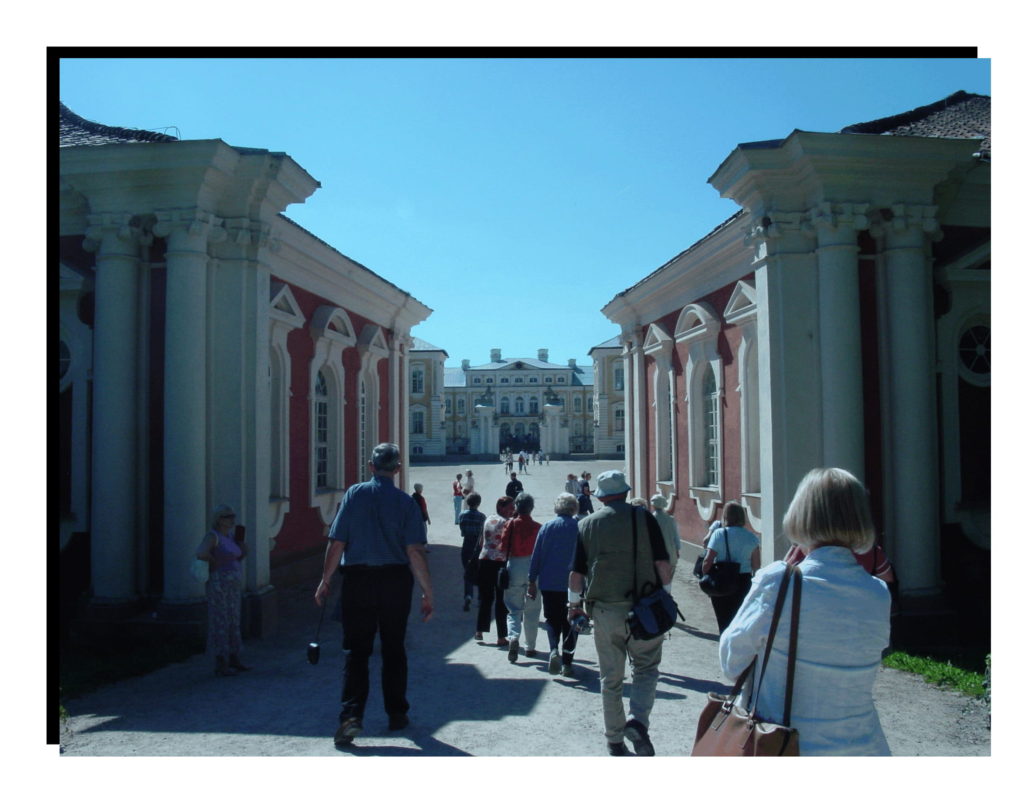
Our hotel in Riga, the Raddison Blu Daugaga, is by the river which leads out to Riga Bay and, beyond that, to the Baltic Sea.
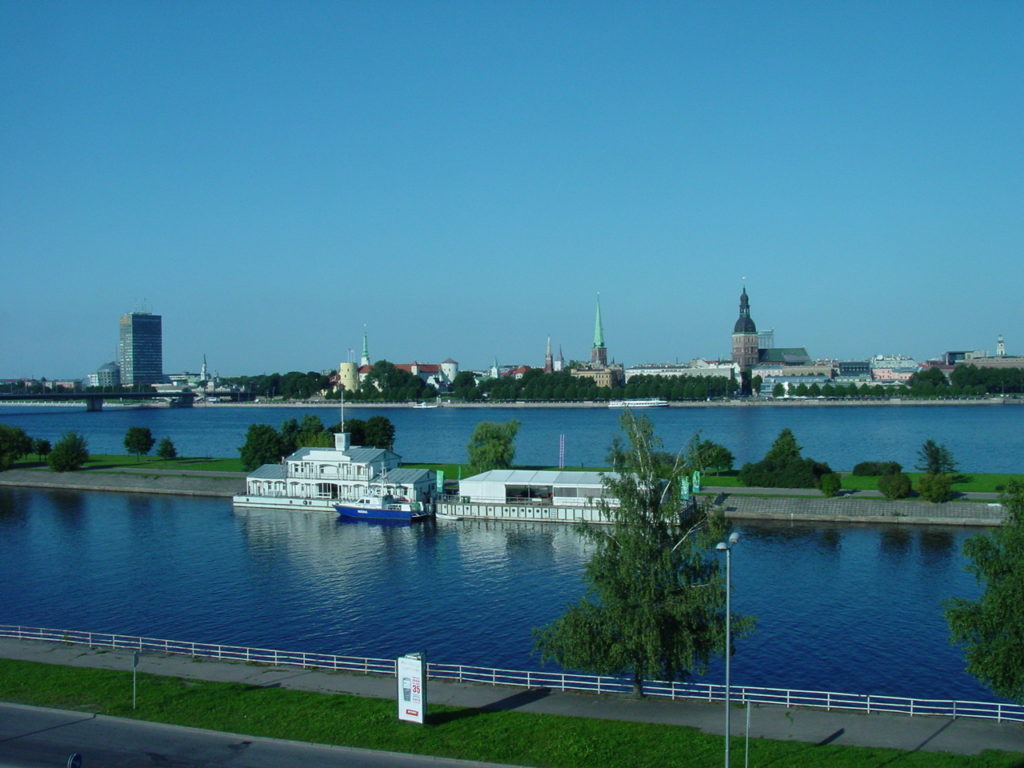
Riga’s telecommunications tower overlooks another bridge to the east.

The location was perfect in that we were just a short walk across another bridge to the Old Town.
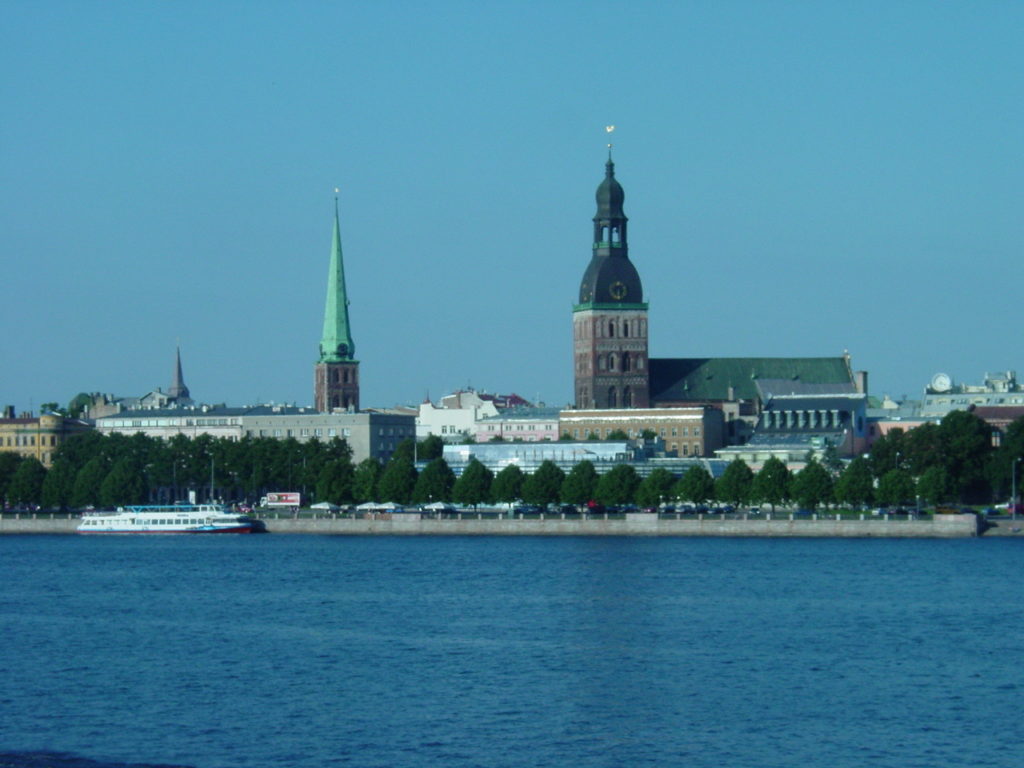
Soon after we crossed the bridge, we came upon the Museum of Occupation. This is considered the “ugliest” building in Riga. Built by the Russians, it is a dark and gloomy reminder of the recent past. The museum’s block-like structure revealing the functional modernism of Soviet architecture of the mid-twentieth century.
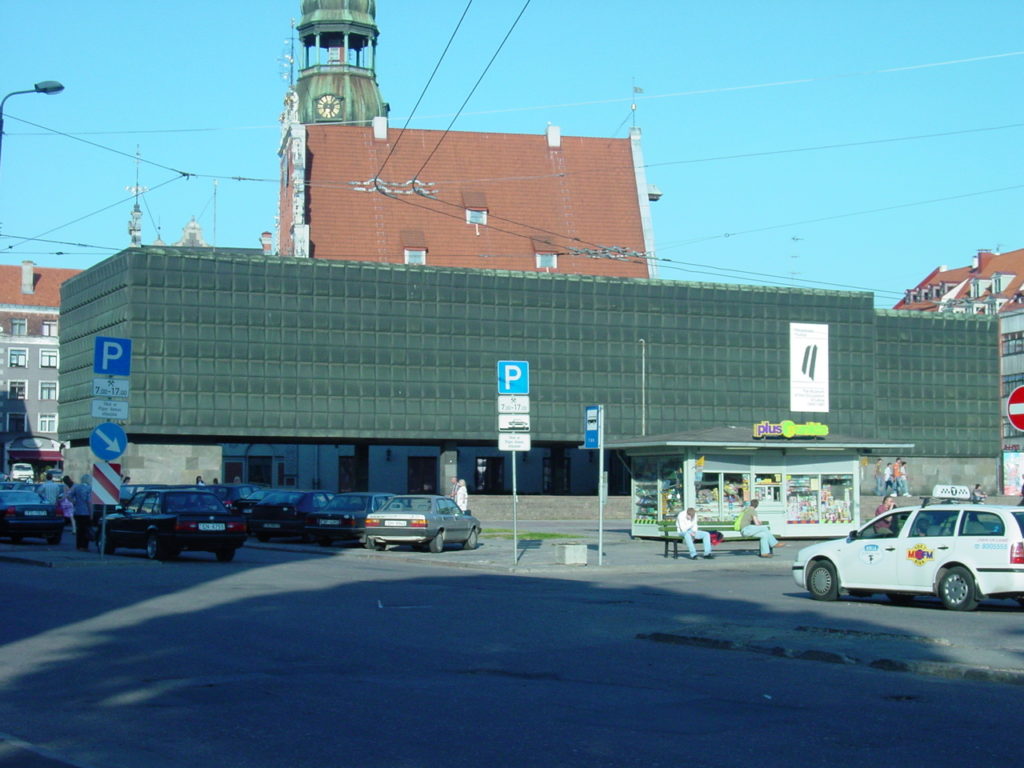
Beyond the museum are two beautiful guild houses in Town Hall Square: The Schwab House and the House of Blackheads. Both were bombed by the Nazi’s during the Second World War and then demolished by the Soviets in 1948. They were rebuilt in 1996-1999 from the original plans and stand as beautiful as ever.
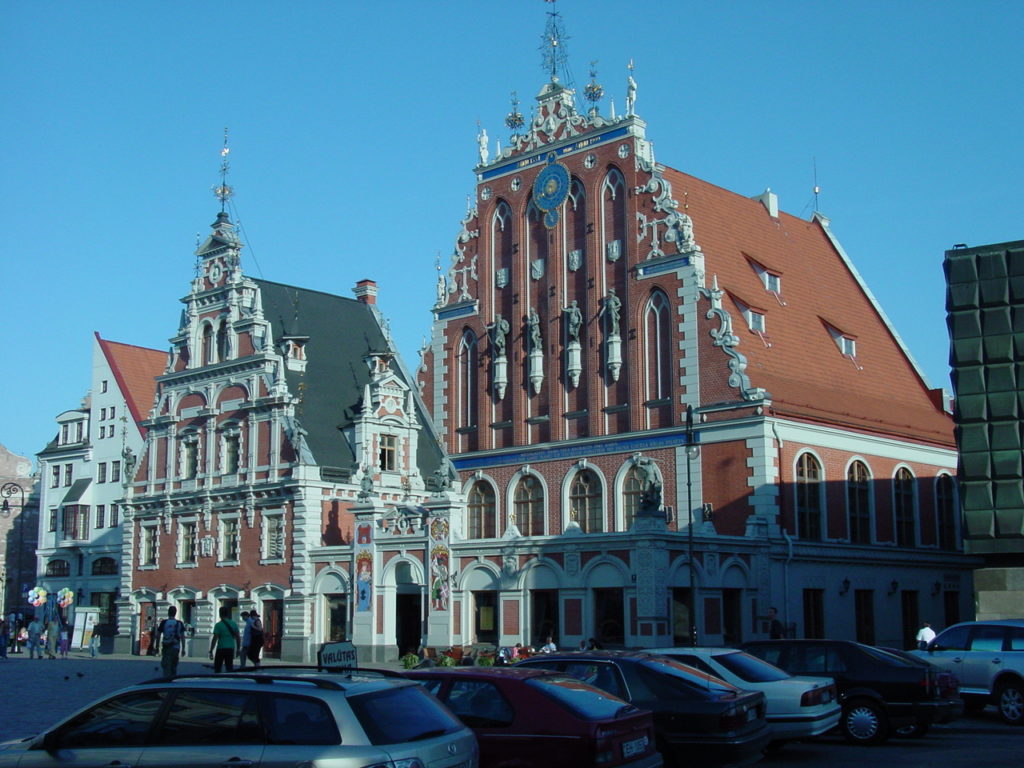
And behind the houses is St. Peter’s church.
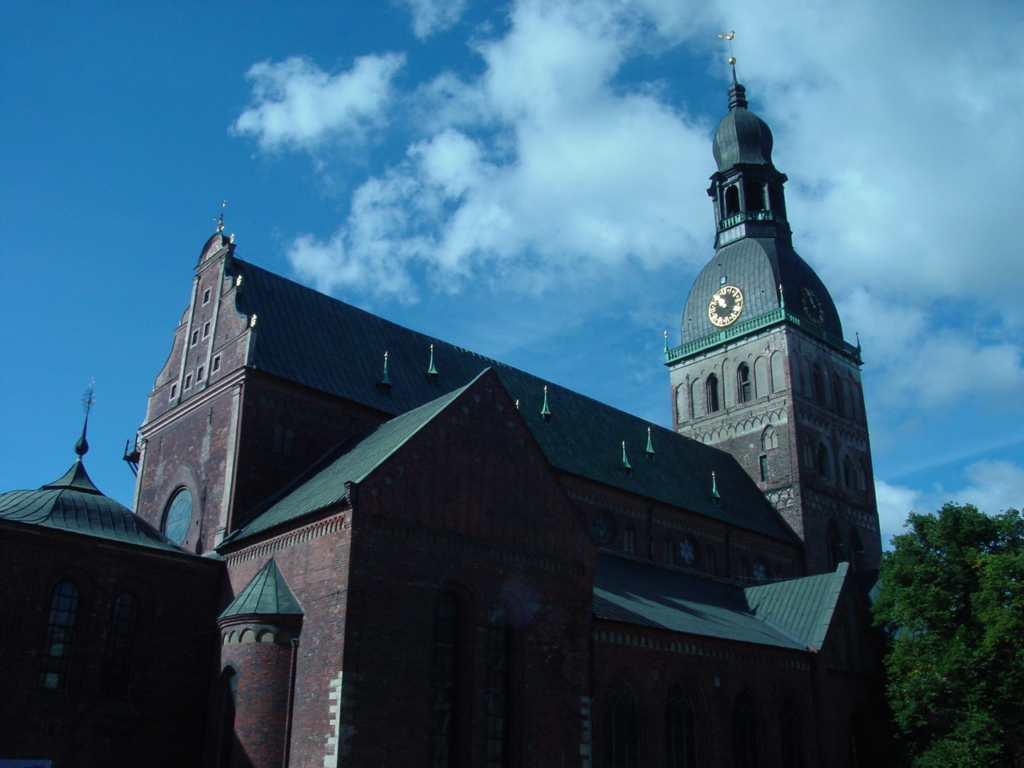
The monuments to Freedom and to the Latvian Riflemen also stand in stark contrast to one another: beautiful and daunting. The Soviet star on one of the riflemen defines their character. While the former remains sacred to Latvians, the latter has been a source of great controversy. Both were considered for removal from to time to time but remain today as stark reminders of Latvian’s past.
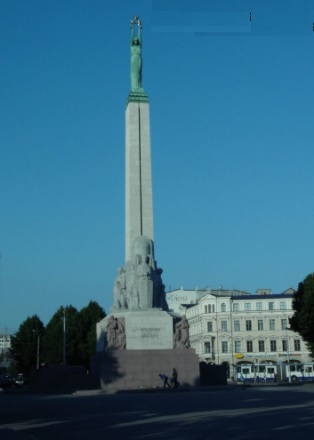
Freedom Monument 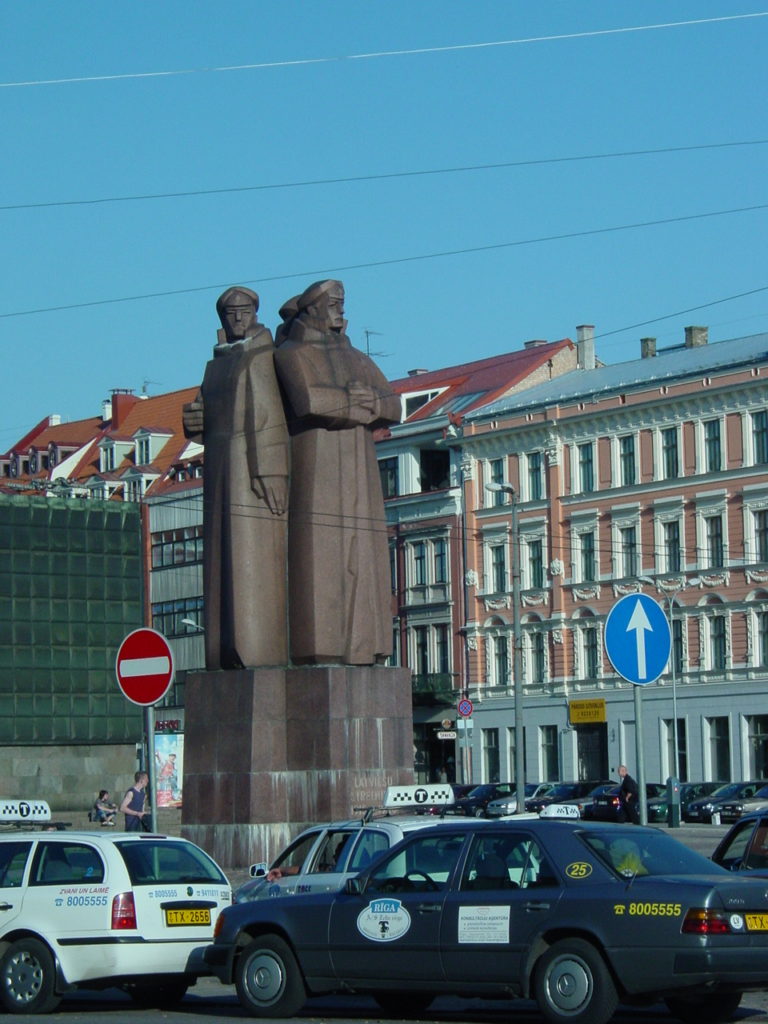
Riflemen
While strolling through the streets and looking into their nooks and crannies, we turned around to see this interesting connection of buildings of different shapes and sizes with the Cathedral, once again, in the background.
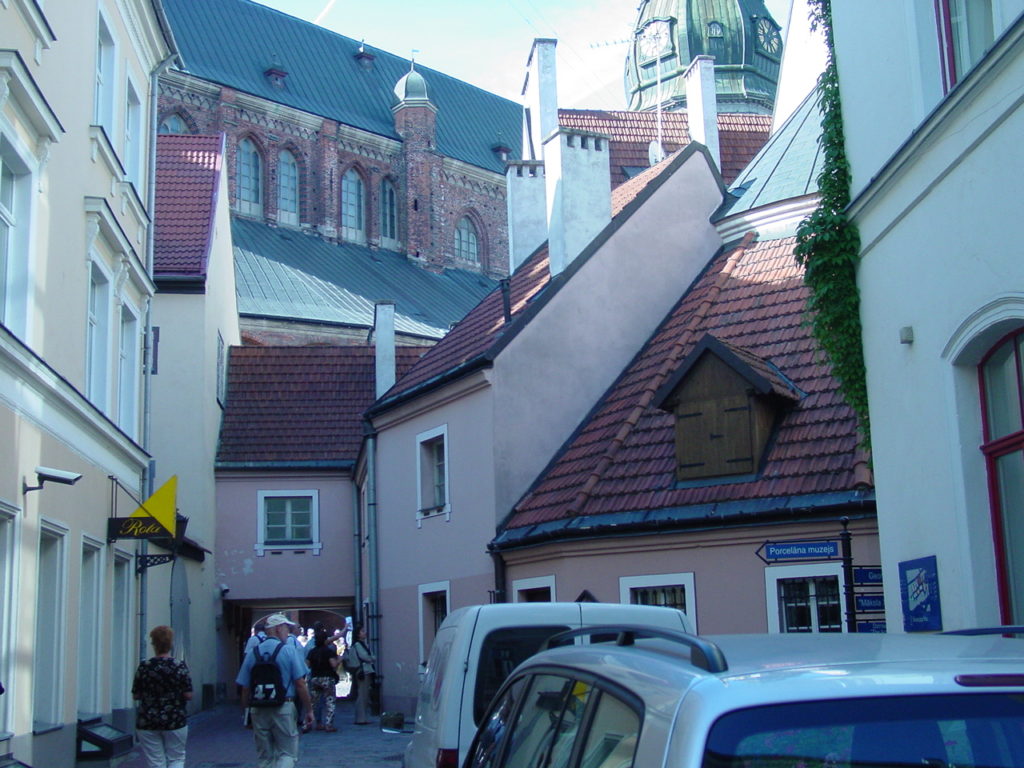
The wonderful Art Nouveau buildings in central Riga, dating from the early 20th Century, are breathtaking to behold. They are truly architectural masterpieces. The “Latvia” link below contains photos and information about these works of art. In particular, Lisa loved the Cat’s House and the story of why they are facing away from one another.

One of my favorites was this sculpted façade in blue and white with black lines outlining the trim work.
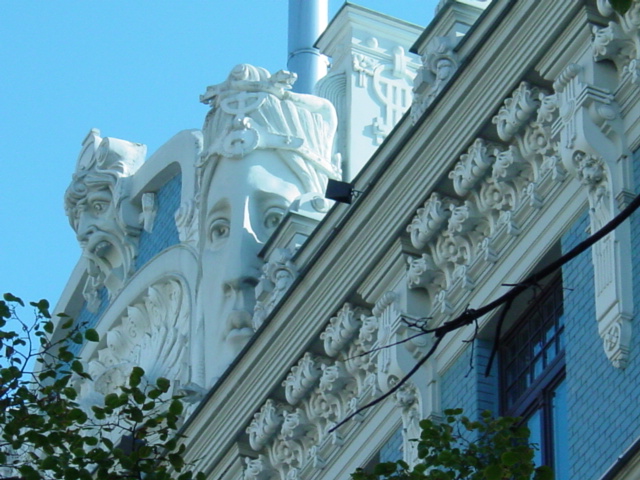
Riga also had its abundance of fine street musicians of different ages working their corners, some performing from memory, others from sheet music. All very talented and a pleasure to hear.
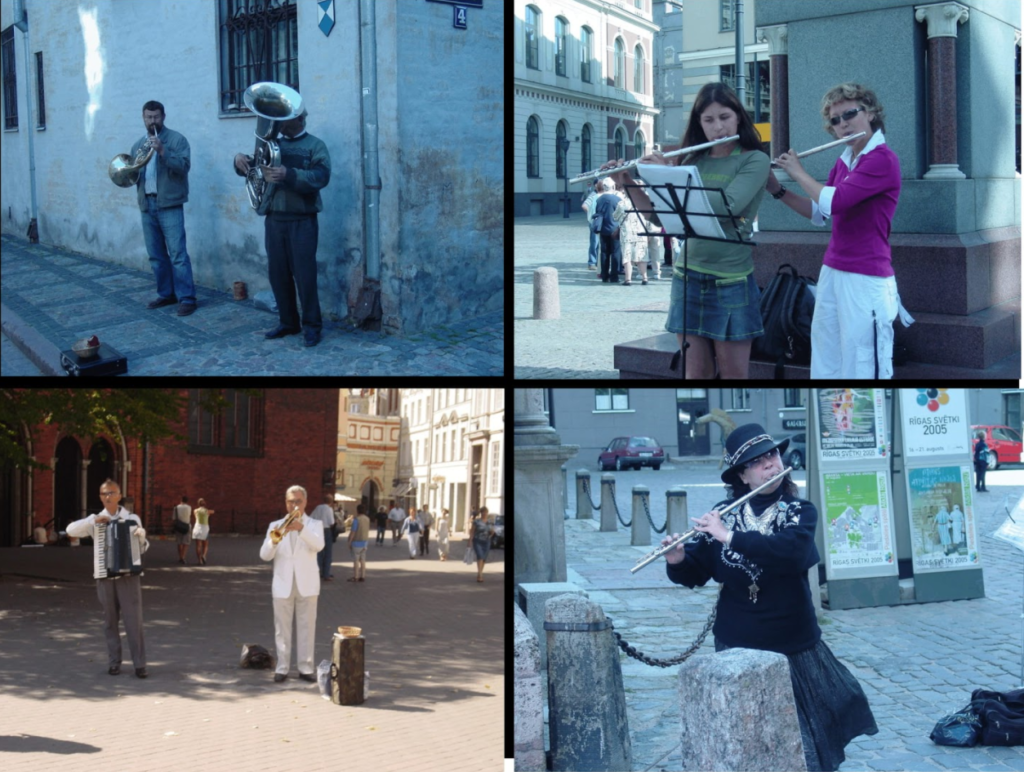
Without a doubt, Riga is a gem, a vibrant city full of charm and history. It’s Old Town churches, guild houses, cobbled stone streets and stunning views made it one of the highlights of our trip to the Baltics.

Photos: Latvia (ctrl+F5 for Presentation mode)